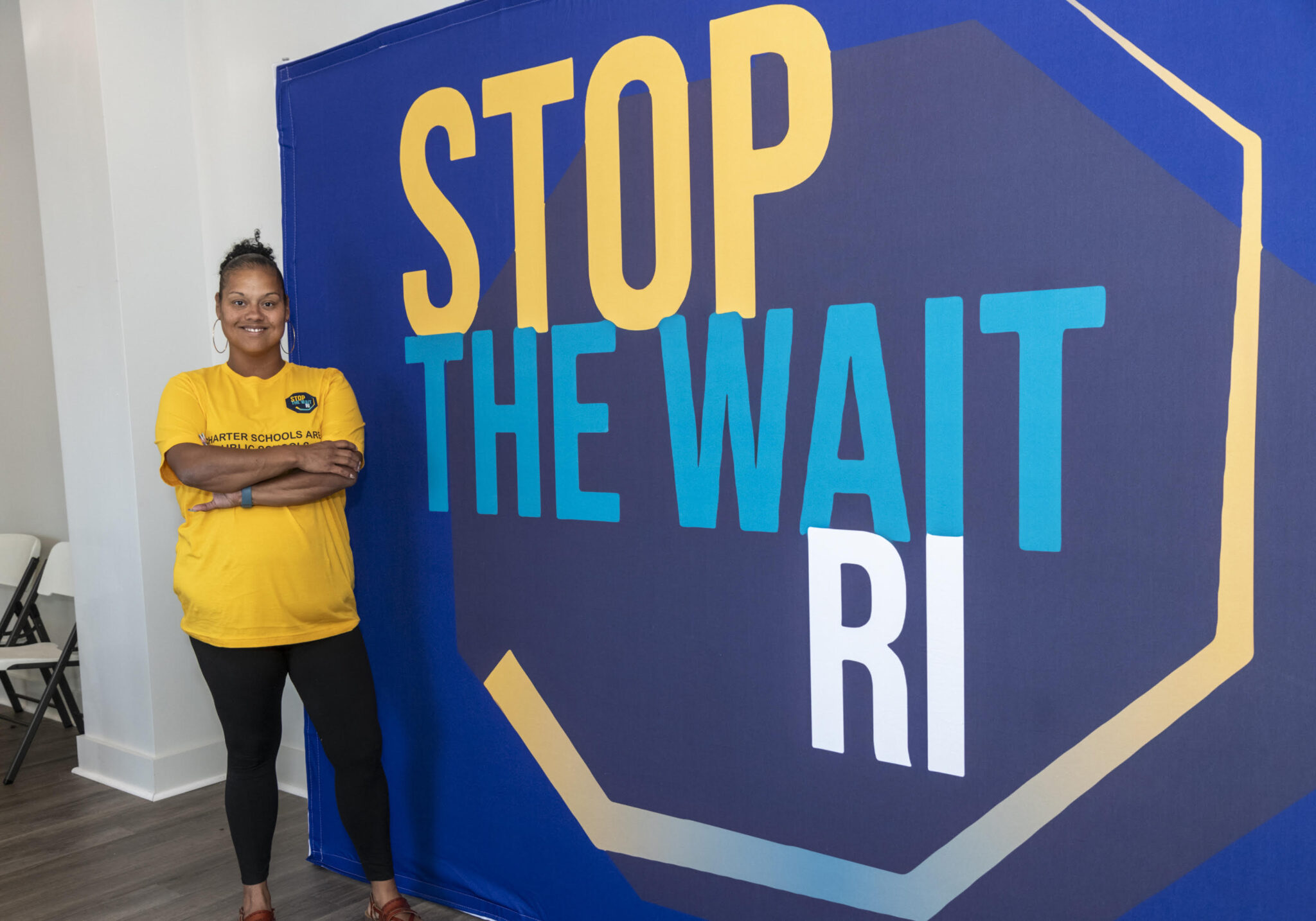Janie Segui Rodriguez was so frustrated with the long wait to enroll her daughter in a charter school that she founded the advocacy group Stop the Wait. (Michael Salerno/Rhode Island Current)
This is what’s in the way of giving the public the schools they are begging for.
Education officials, community agencies and foundations are fond of holding “listening tours” or similar gatherings to hear about parent and community issues and ideas. I’ve never heard of a single new idea that emerged from such meetings, never mind developed into a real plan. Surely, the hosts would have touted their responsiveness to the concerned community if one had.
However, Rhode Island has a set of hard data, obtained directly from families, that is all but screaming at the state: Parents want charter schools and they want them now.
Last year, families submitted over 28,000 applications for 2,475 open seats at charter schools, according to the Rhode Island League of Charter Schools. Kids had a 1 in 11.3 chance of hitting the lottery, literally, to win one of those precious seats. The 2024 window closed on March 14, and advocates estimate this year’s applications topped 31,000.
Janie Segui Rodriguez got so sick of the non-stop fight with her daughter’s district school, she founded a growing organization, Stop the Wait. For her, it’s about giving all parents, not only the affluent, options for educating their kids.
“I was a mom on charter wait lists for six years while my daughter was drowning in her [district] school,” Rodriguez said in a phone interview. “I worked with the school, but they kept saying she’s fine. She couldn’t write a sentence in 4th grade. When she did get into a charter school, she could finally write a sentence. She got out of [academic] trouble literally in a few months.”
In 2021, the Rhode Island Senate passed a bill imposing a three-year moratorium on new or expanding charters. Rodriguez already belonged to parent advocacy groups and also took the initiative to gather more parents to fight hard against the bill. (This was the inception of Stop the Wait.)
The moratorium bill did not pass.
Meanwhile, Rhode Island’s public service employee unions and their legislative allies work to preserve their considerable fiscal privileges and anti-education, labor-contract entitlements, such as hiring by seniority instead of merit.
All this is happening while at the nation level, charters are growing while traditional districts are shrinking significantly.
Stanford University’s 2023 CREDO report says that over 10 years, Rhode Island’s charters achieved the highest growth scores in the nation for math. In reading, the Ocean State tied with Tennessee. Granted, the calculations used charter achievement gains as compared with district achievement levels which, sadly, set a low bar.
What’s in the way of giving the public the schools they are begging for? The list is long, but here are three biggies:
1. A drumbeat of misinformation.
“There’s a lot of wacky rhetoric about charters being ‘private’ and ‘corporate’ or pushing out students,” says Chiara Deltito-Sharrott, director of the Rhode Island League of Charter Schools in a phone interview. “Charters are free to all, paid for by the public. They are not private schools. But they’ve become complicated in the public’s mind.”
Charters operate under all the same state accountability mandates. In fact, they face more responsibility than district schools because at least every five years, they must gear up for forensic scrutiny from state education officials in order to have their charter renewed. District schools do not shoulder that expense or time-suck.
Deltito-Sharrott adds that she dearly wishes there were a charter for her own child near her suburban district. Suburbs now get an unequal piece of the fiscal pie, but “it seems OK for inequities to exist,” she said.
2. Fiscal constraints.
According to the Rhode Island Public Expenditure Council’s exhaustive study, the per pupil expenditure (PPE) for charter schools is 16.4% lower than the state’s overall average PPE of $17,983. This report details the myriad ways charters get nickel-and-dimed by laws and regulations designed to send big portions of their per-pupil expenditure back to the district from which the student came. For my summary of that report, see here.
Charters must accomplish more to survive, while working with far less.
3. Housing aid
Municipalities own and theoretically maintain district buildings. Charters must buy or rent, using their reduced per-pupil expenditures with, if they’re lucky, private donations. Districts can defer maintenance on their buildings while charters must keep them up as a condition of their charter renewal.
The state kicks in money to support certain large capital projects at vastly different rates. Theoretically, the rates are based on a district’s ability to pay for such work – classroom additions, renovations of old buildings, modernization of outdated facilities.
A recent Charter League report details those rates and crunched some numbers to show the dollar effects of discriminatory reimbursement rates. Bottom line: Charters get no more than 30% reimbursement, whereas the richest districts in the state get at least 35% help with the buildings they already own. Providence and Pawtucket get 80% reimbursement and Central Falls 96%, which no one begrudges. But charters also disproportionately educate low-income students 71.1% vs. 47.8% in traditional districts, according to the RIPEC report.
All kids deserve public options, including collaboratives and traditional public schools. Choice and options are key to an engaged, satisfied public.
But the state denies families charters because special interests have the power to create legal subtleties and are working to cripple them. What’s the justification? Exactly who are the schools for?
First published: RI Current News, April 15, 2024
Public comments posted on this site are much appreciated. However, if you prefer: [email protected]
